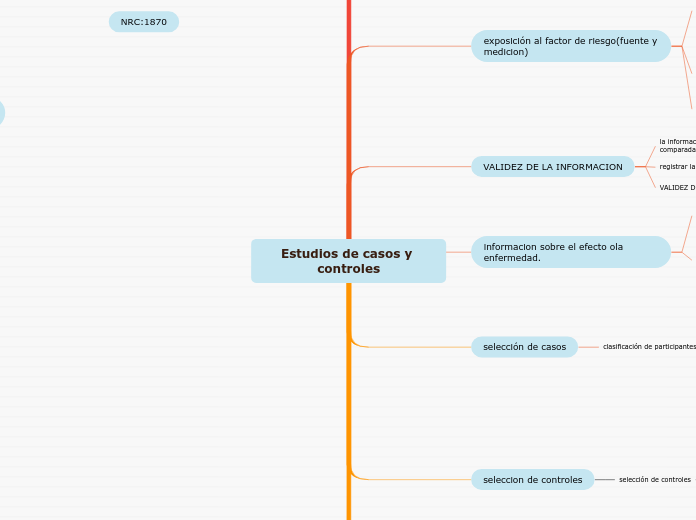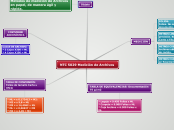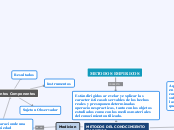REFERENCIAS
Colimon, K. M. (1990). Fundamentos de epidemiología, pp. 155-168.
NRC:1870
Paola Rodriguez Celis ID:100061080
Dago Paredes Casas ID:100060890
Paula Pataquiva ID:100061077
Daniel Sandoval ID:100060750
Estudios de casos y controles
To name your story, you have to think about the overall message and what you want your audience to understand from the story. Also, make it relevant and easy to remember.
analisis e interpretacion
consiste en la comparación de la proporción de los individuos con el factor de exposición
para el analisis de casos se consideran algunos metodos en especifico.
análisis estadístico
Prevalencia de la exposición en la población
estudiada = ni/n
Prevalencia de la exposición en los casos = a/mi
Prevalencia de la exposición en los controles = b/mo
RM = a d / b c
Cuando de la razón de momios se obtiene una cifra
mayor de uno, esto indica que el factor en estudio se
está comportando como un factor de riesgo.
se obtienen las medidas de asociación o efecto que cuantifican la presencia y la magnitud de la asociación entre un factor de interés y el evento resultado mediante la razón de momios.
El análisis de estos estudios, abarca medidas de frecuencia, de asociación (incluyendo la evaluación de la significancia estadística de la asociación encontrada) e impacto
potencial.
las medidas de frecuencia que sí
pueden ser obtenidas a partir de un estudio de casos y
controles, son las de frecuencia de exposición
el estudio de casos y controles generalmente no tiene una base poblacional, las medidas de
frecuencia que se obtienen de él no son de enfermedad
(o evento resultado de interés), ya que se ven influidas
directamente por la cantidad de controles
tipo común.
la muestra puede ser igual o mayor para el estudio de las características.
seleccion de controles
selección de controles
se realiza mediante un ajuste de las caracteristicas de los sujetos y su tipo de muestreo.
Para obtener una muestra representativa de la
población su selección debe cumplir algunas
consideraciones:
misma probabilidad de ser elegidos
en el estudio; por metodos probabilísticos (aleatorio simple, estratificado o por
conglomerados).
el investigador debe
seleccionar una fuente adecuada en la que se
obtenga a los sujetos que conformarán el grupo control, para esto hay ciertas
alternativas
Controles hospitalarios: son los sujetos que acuden al mismo centro sanitario, y solicitan atencion para varios eventos, presentan multiples factores confusores que pueden alterar la comparasion.
Controles vecindarios: los participantes viven en la misma zona residencial que los casos incluidos en el estudio.
reducir factores confusores
que pudieran modificar las comparaciones entre
los grupos
bases municipales
utilizar una estrategia llamada pareamiento, que consiste en identificar
sujetos que comparten ciertas características
específicas: edad, sexo, etc.; con sus respectivos
casos.
Los controles deben ser seleccionados de
la misma fuente poblacional que los casos.
mismas condiciones culturales y geografi¡cas.
selección de casos
clasificación de participantes
casos probables
atencion
no omitir signos o sintomas.
se mantendrán en observación
se deben descartar
confirmar en registros o anexos
aplicación de ayudas diagnosticas
casos comprobados o ciertos
estén ya diagnosticados
informacion sobre el efecto ola enfermedad.
The ending of a story is essential. We all know that if the ending is weak, what happened before loses its importance. So make it unpredictable, but fair. A resolved ending answers all the questions and ties up any loose threads from the plot.
morbilidad mortalidad.
pronostico
This is the closure section of the story.
See examples of possible outcomes below:
- all problems have been solved
- it's clear how each one of your characters ends up
- your main character is transformed by the challenge
factores positivos.
factores negativos.
Try answering these questions to come up with a closure:
- Have all the problems been solved?
- Is there a clear picture of what happens with each character in the story?
- Has the challenge transformed your main character?
- How do the characters feel in the end?
enfermedades con evolución rápida
atención
baja calidad de atención
conducen a una muerte rápida
clasificacion de enfermedad
This is the moment when the main character surpasses the last obstacle and finally faces their greatest challenge.
The climax usually follows one of these patterns:
- realization
- resolution
- choice
Type in your answer.
transmisible o no, aguda o crónica.
VALIDEZ DE LA INFORMACION
pueder ser confirmada atravez de ayudas diagnosticas.
registrar la información
puede ser parcial o totalmente verdadera.
la información debe ser obtenida , medida y comparada correctamente.
exposición al factor de riesgo(fuente y medicion)
The middle of the story is where you add layers of complications that will lead to the end. Reveal more about the character's journey. Did their personality go through changes? How did they overcome the challenges? And as you build up the story’s central conflict, make it more personal to that character. Also, from the middle act, you have to lead into the final act.
problemas de comparabilidad.
There wouldn't be any tension and excitement in your story if there weren't any obstacles in your character's way.
se pueden presentar problemas por falta de comparabilidad
A story is nothing more than a character overcoming a series of difficulties to reach the desired goal. Obstacles usually create suspense and conflict. In overcoming obstacles, there is growth: weak becomes strong; hatred turns into love; sadness into happiness; wrong into right; lies into truth; or evil becomes good.
See a few examples below:
- stopping a meteor
- finding a killer
- finding love
se debe definir la cuantificación de la exposición
problemas para definir la inferencia causal
medición de la exposición
Your character(s) need(s) motivation in order to solve the challenge(s).
puede ser señalada en presencia o ausencia de enfermedad.
Secondary characters also might have motivs beacuse of which they may cross path with main character or which might trigger them to help the main character.
clasificar exposición al riesgo
determinar variable cuantitativa o cualitativa
fuentes de información
Each story has a main character and that character usually needs to solve a problem or challenge. The character's challenge is the one that creates tension throughout the story.
certificados de nacimiento y fallecimiento.
consignan datos de utilidad
historias clínicas institucionales
Type in any other challenges which other characters in the story need to face.
información valida
controles hospitalarios
entrevistas y encuestas
In most stories, there are 3 challenges. The number 3 is a mystical number symbolizing completeness. Try to come up with interesting challenges with which your character needs to struggle.
See a few examples below:
- turns into a werewolf at night
- is sent back in time
cuantitativos
cualitativos
generalidades.
In the beginning of the story (or the exposition), you will need to introduce the setting and characters. You might also want to introduce the main conflict. This part of the story is important because it gives the reader necessary background information and maybe even a first insight into a character’s personality.
beneficios
The setting (time & place) of a story can change throughout the plot.
medicion y evaluacion
Sensory details include sight, sound, touch, smell, and taste. These details are important because they create depth in your setting.
See a few examples below:
- the smell of fresh bread
- the scent of freshly cut grass
- rain falling onto the windshield etc.
analisis de exposición al riesgo efectivo
aplicacion de encuestas.
tiempo
The weather is an important element in your story because it can highly influence the ambiance and the mood of the characters.
interpretación rapida relativamente.
The most affected character is the main character. Write down here if he/she is affected by these weather conditions in any way. For example, if they lost a family member or their home during a hurricane, etc.
planeación efectiva
Decide if you want to include an element of nature in your story. For example, a rainbow can be a very nice choice for a happy ending. The mist in a story can represent mystery and secrets. A thunder can appear in the background at the moment when the 'bad guy' of the story makes its appearance, etc.
relativa rapidez en ejecución
Does your story include catastrophic weather? See a few suggestions below or add your own:
- hurricane, earthquake, storm, etc
económicos
The time of the story can also change. It can describe the event of a single day or can include an entire year's plot. Anyway, don't forget to mention it.
eficaz y eficiente
bajo costo
se realizan con un fin
Characters are essential to a good story. Usually, the protagonist(s) is/are the most affected by the plot. Introduce a character by focusing on their actions, interests, and occupation, as the physical appearance doesn't make a difference in most cases.
determinan
Type in the name of your character.
aclara la etiología de la enfermedad.
Add other qualities/attributes of the character.
explorar las características de los casos.
What is your character's main goal?
fight Evilfind lovedefeat his/her enemyrule the worldmake friendstime travelmake an awesome discoveryOther
ensayar una hipótesis de casualidad.
Which traits best describe the character's personality? Choose more if necessary:
introvertedloyalkindindependentquick-thinkingadventuresomeidealisticsweet-naturedcalmrisk-takercreativewittystrictfussyweirdclumsyharshaggressivecarelessclingingcowardlycrueldeceitfulimpulsiveOther
formular hipótesis de prevención.
Choose the type of your chacter:
Protagonist (main character)Antagonist (main character's opponent)Flat (stereotypical character)Round (his/ her personality develops throughout the story)Static (doesn't evolve as a person throughout the story)Dynamic (dramatical change in personality)Confidant (the main character trusts him/ her)Foil (contrasting character who enhances the personality of another character)Other










